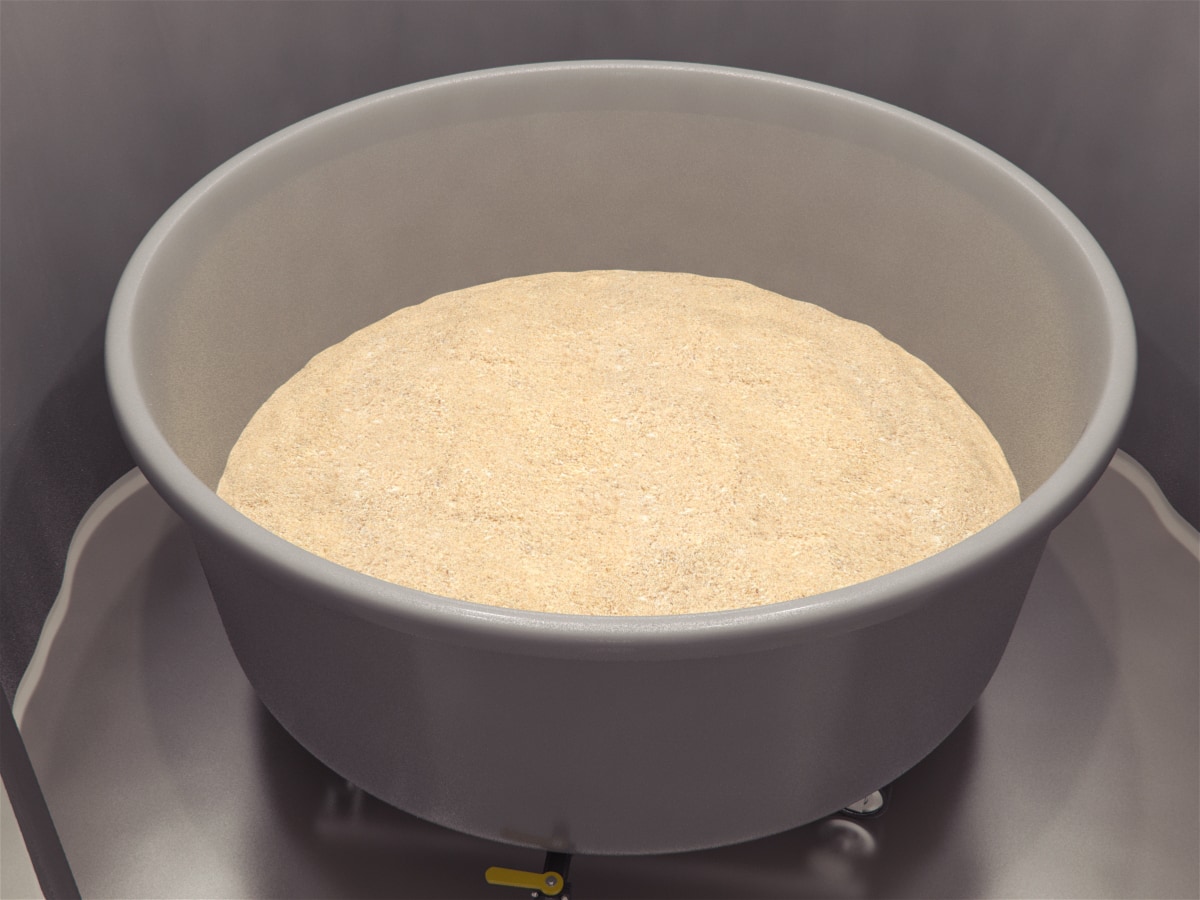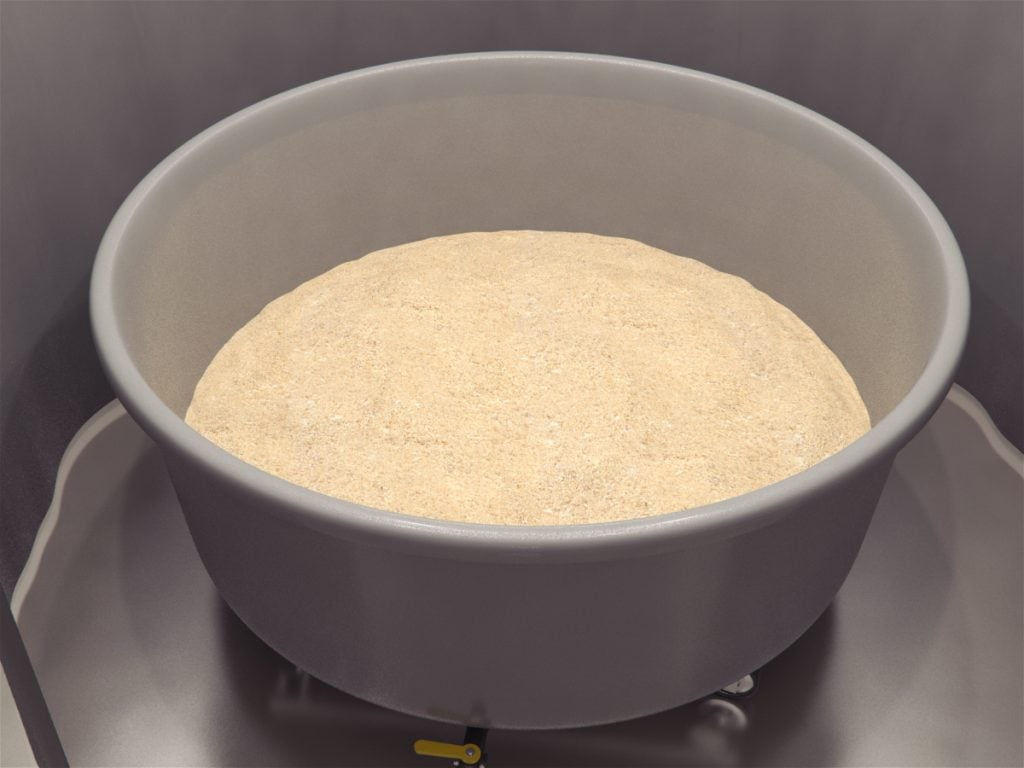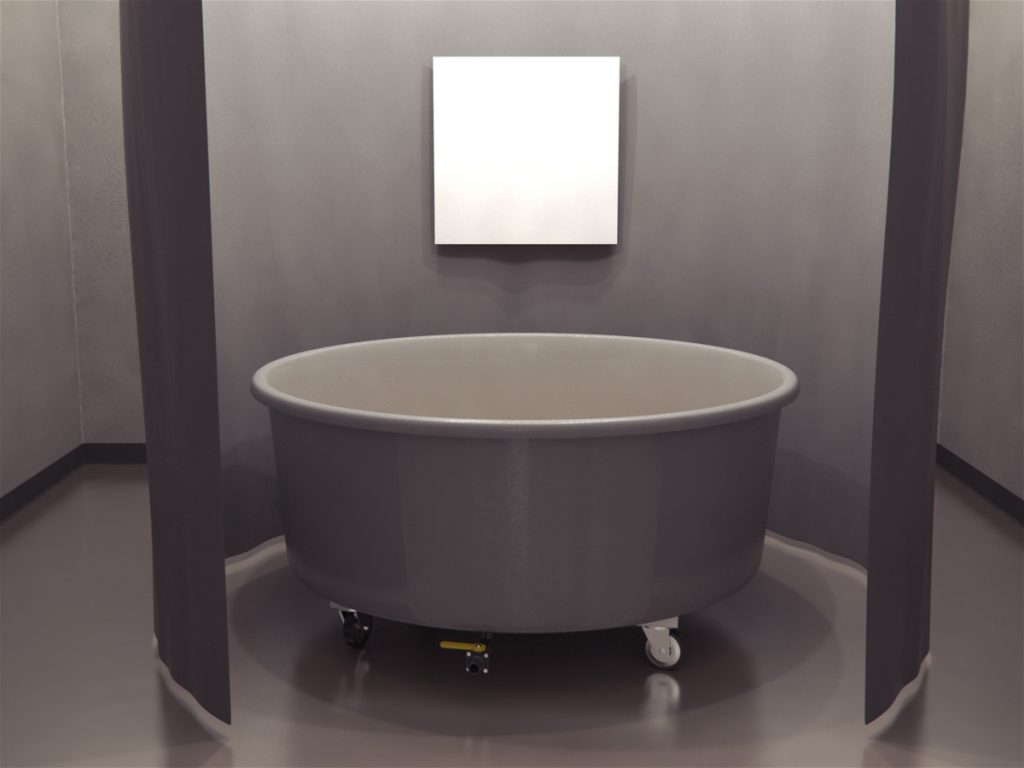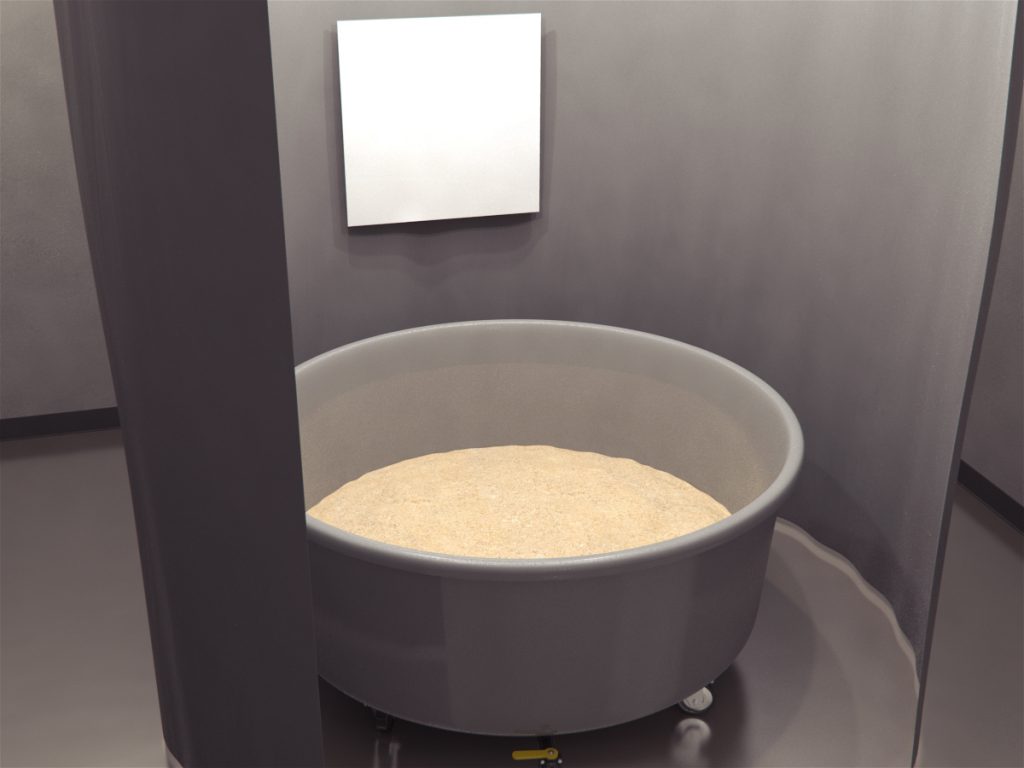- Oasis Maze
Description
The Dry Morris Water Maze is a dry land version of the Morris Water Maze (MWM). The task is used in the assessment of spatial learning and memory. Much like the Morris Water Maze, the Dry Morris Water Maze is a hidden-goal task that requires the food-deprived subjects to locate the hidden food rewards. This food motivated task is less stress-inducing than the conventional MWM which uses the fear of drowning to motivate the subject to find the hidden platform. This task requires the use of hippocampal-based learning to remember and locate the hidden rewards. This ability can be affected by lesions and drugs.
The Dry MWM is a food reward-based task. Subjects are placed in an open field that is covered with sawdust and are required to find the hidden food reward. The task can be aided by distal cues placed around the maze. Another dry adaptation of the Morris Water Maze is the Oasis Maze. Instead of a sand bed to hide the reward, as is the case with the food reward dry maze, the Oasis Maze has small hidden wells, scattered around the arena, holding water. Both these tasks use the same principle of spatial learning and memory. Other similar mazes include the Morris Water Maze and Barnes Maze.
Pricing
4 Ft (Mouse)
$ 1490
Per Month- Polyethylene exterior
- Non-cloggable drain placed on the side or under. The choice on order.
- 1 Platform included
6 Ft (Rat)
$ 1890
Per Month- Polyethylene exterior
- Non cloggable drain placed on side or under. Choice on order.
- 1 Platform included
Are you an academic scientist and creator?
Learn how your lab can tech transfer this and similar devices from your lab to industry.
Documentation
Apparatus & Equipment
The Dry Morris Water Maze consists of a 183 cm diameter cylinder of height 91.5 cm. The floor of the cylinder is covered up with 10 cm of sawdust that is usually mixed with the powdered form of the food reward. The mixing is done to prevent the influence of olfactory stimulus on the subject’s performance.
Another construction of the Dry Morris Water Maze makes use of square of sides 140 cm and having a height of 100 cm.
Training Protocol
The Dry Morris Water Maze is cleaned before and after trials to minimize the influence of any external cues. The sawdust must be replaced for each session and blended with powdered food reward to limit subjects searching for the food reward based on olfactory cues.
Video tracking software, such as Noldus Ethovision XT, is set-up before beginning the sessions. Ensure optimal lighting and set-up visual cues, if any.
Pre-training
Pre-training is performed 4 trials per day for 7 days. For these trials, a dowel (13 cm height) and food combinations are used. Place the food in an open petri dish (3 cm diameter) next to the dowel on the surface of the sawdust. Release the subject from one of the 4 start points. Repeat the process by randomly changing the position of dowel + petri dish combination. For subsequent trials cover the petri dish with a close-fitting lid and seal with a piece of parafilm (maintain the sealing process for all subsequent trials). Push the petri dish deeper under the sawdust with each progressing trial. At the end of the pre-training week, if the subject performs successfully in two consecutive trials, perform catch trial wherein there is no food reward under the dowel. If the subject runs towards the dowel for the catch trial, pre-training is complete.
Spatial Training
Spatial training includes 30 to 60 trials of duration 2 to 3 minute. During these trials, a fixed unmarked goal location for each subject is chosen and baited. These locations can be selected as the vertices of 2 octagons having the same center as the cylinder used; yielding 16 possible goal locations. The smaller octagon has vertices at the half length of the cylinder while the larger octagon has vertices at the three-quarter length of the radius.
Hold the subject in a holding box for 2-minutes before releasing it at one of the start points. If the subject is unable to find the reward and the maximum time has elapsed, raise the dish vertically above the sawdust and allow the subject to consume it once it approaches it. Maintain sufficient inter-trial intervals. Interleave the trials with catch trial for every third trial. In this trial, the goal location is not baited. However, if the subject reaches the goal location, the experimenter should immediately place the food dish atop the goal location as a reward.
Terminate the trials after 30 trials if the subject reaches the rewards in less than 10 seconds per 5 trial block criteria. If the subject fails to meet the criterion even after 60 trials, terminate the training.
Object Discrimination Training
The training is performed in the square apparatus. The training involves 30 trials of 3 minutes each, wherein the subject learns to dig for food reward buried under small objects over a period of 2 weeks. Ten reward locations are randomly selected from 16 possible locations arranged as a square grid of side 100 cm.
Begin initial training placing a single object on the surface of the sawdust. Place a food reward under the object and randomize the location over the 1-week training period. After the first week, introduce 9 more objects into the arena. During this period ensure food reward is always placed under the same object. Randomise the positions of all the objects for every trial. In case the subject fails to find the reward after the time has elapsed, then raise the food reward vertically to the surface and allow the subject to consume the reward. Every third trial performed should be a probe trial with no hidden reward. If the subject successfully digs under the correct object, quickly place the food cup next to the object. In case the subject fails the task, place the food reward next to the correct object.
Probe Trial
In case of surgery being involved, probe trials are conducted after the recovery period.
Following spatial training subjects undergo probe. Perform 30 trials with the same goal location as the spatial training, with every third trial being an un-baited catch trial.
Following the object discrimination training, perform 3 trials in a single day without rewards regardless of the subject being successful or not. Follow this by 10 trials spread over 2 days using the reward protocol used during the object discrimination training.
Evaluation of the effect of hippocampal lesions on dry MWM performance
Kubie et al. used a Dry Water Morris Maze to test young adult male Long Evans rats in a navigational task and object discrimination task. For the navigational task, after preoperative training, rats received lesions or sham lesions either between 2 and 6 days after training (1-week training-lesion) or after 14 weeks (±few days across rats; 14-week training-lesion). For the object-discrimination task, during spatial training and probe trials, 10 objects were used that were placed above the surface of the sawdust. Stereotaxic surgery was performed same as in the navigational task. Analysis of the data from the tasks showed that the massive lesions led to the worse performance in the navigational task with very little effect on object-discrimination performance.
Data Analysis
For the Dry Morris Water Maze task, the following data are recorded,
- Duration of time spent in the goal quadrant
- Number of errors
- Path length
- Path traversed
- Percentage error
- Percentage time spent in the target quadrant
- Time spent in the vicinity of the reward
- Time taken to find the reward
Strengths & Limitations
Strengths
The Dry Morris Water Maze task, as opposed to the Morris Water Maze, does not use an aversive stimulus such as the fear of drowning. The task is simple and cost-effective. Similar to the Barnes Maze and Morris Water Maze, the Dry Morris Water Maze is a hippocampal-dependent learning and memory task. Effects of drugs and lesions on memory and learning can easily be investigated in the maze. The task also allows assessment of object discrimination abilities.
Limitations
In the Dry Morris Water Maze task, the scent of the reward may serve as an olfactory cue. This effect can be minimized by mixing the sawdust with powdered reward. The Dry Morris Water Maze task can be time-consuming. Handling of the subjects and their own behavioral responses can impact the performances. Proper lighting is also crucial during the task. The interval between the recovery and the probe trial can also affect the performance. Overtraining the subjects can result in performance fatigue. Other factors influencing the performance may include the age, sex and other unintended cues (auditory, olfactory or visual).
Summary & Key Points
- The Dry Morris Water Maze is an adaptation of the Morris Water Maze.
- The Dry Morris Water Maze is used in the assessment of spatial learning and memory.
- The maze can be easily adapted for water-reward or food-reward based task.
- The water-reward Oasis Maze has small wells spread over a circular open field.
- The food-reward Dry Morris Water Maze uses a cylinder that has a layer of sawdust to allow burying of food rewards.
- As opposed to the Morris Water Maze, the Dry Morris Water Maze is relatively less stressful for the subject as it doesn’t use an aversive stimulus (fear of drowning in MWM).
References
Kubie J.L, Sutherland J., Muller R.U. (1999). Hippocampal lesions produce a temporally graded retrograde amnesia on a dry version of the Morris swimming task. Psychobiology.27 (3).313-330




